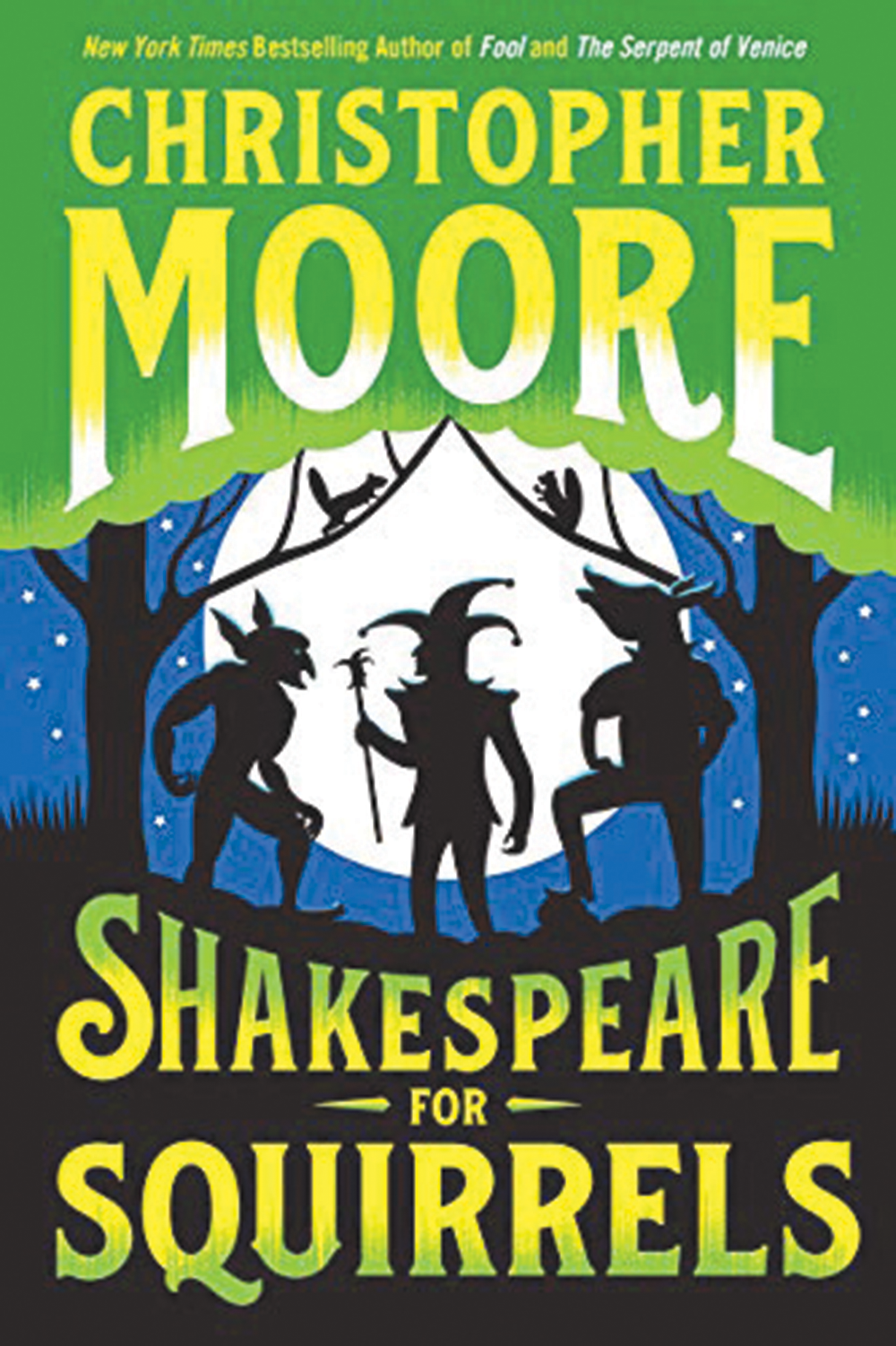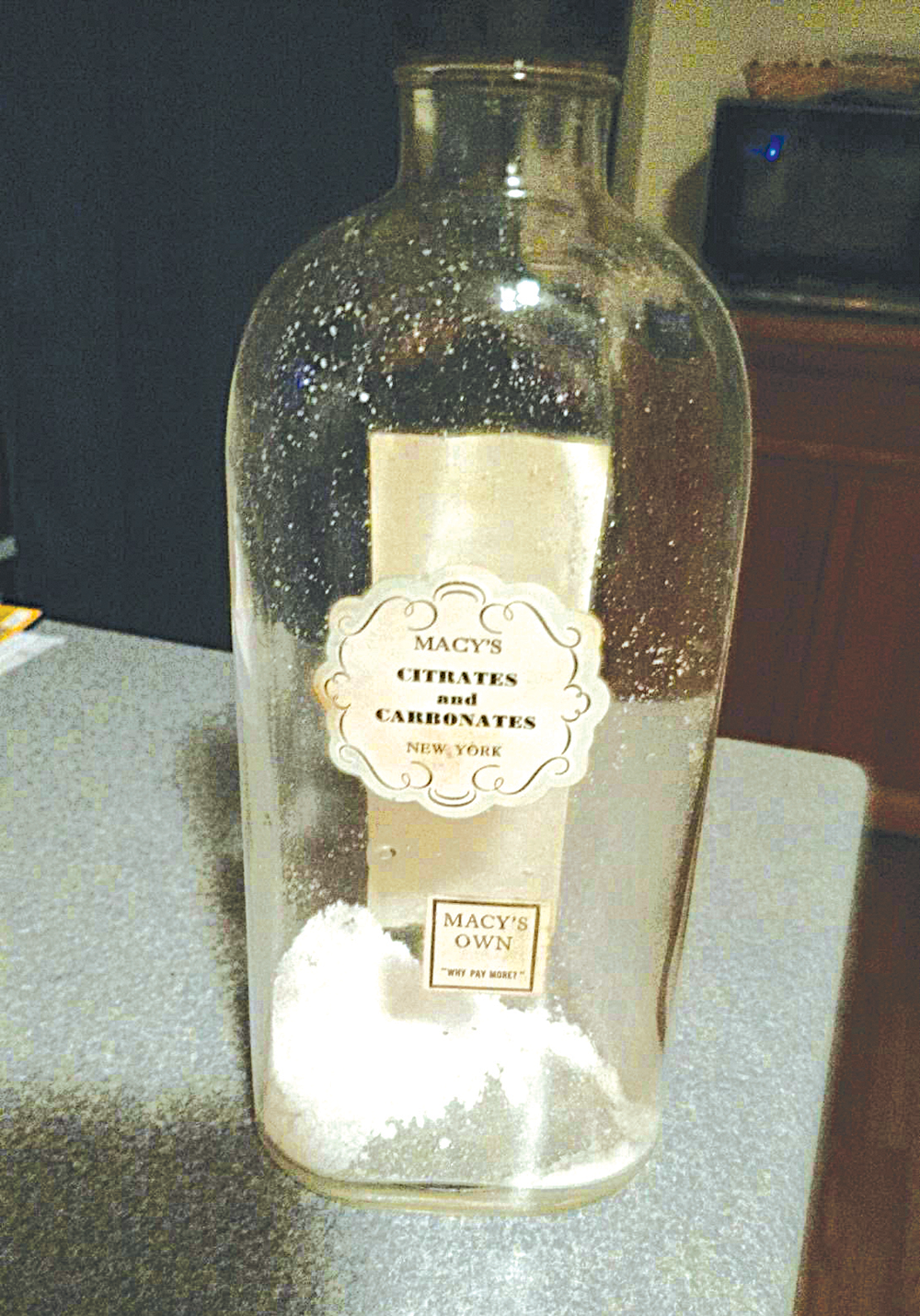Shakespeare for Squirrels, by Christopher Moore (William Morrow, 271 pages)
In one of the more memorable songs from the musical Something Rotten, a character named Nick Bottom seethes “God, I hate Shakespeare — He has no sense about the audience / he makes them feel so dumb / The (expletive) doesn’t care that my poor (expletive) is getting numb.”
The same could be said of Christopher’s Moore Shakespeare for Squirrels, only it wasn’t so funny.
The third in a series of comedies derived from Shakespeare’s plays, the novel is a raunchy retelling of A Midsummer Night’s Dream, populated by characters that will be familiar to anyone who has seen what is considered to be the Bard of Avon’s most performed play.
The main characters were introduced in Moore’s 2009 novel Fool, a satirical take on King Lear, and later embellished in 2014’s The Serpent of Venice. They are Pocket, a court jester; Drool, his dimwit companion; and Jeff, a monkey. In the opening, they are near death, adrift in a boat, Drool so delirious from hunger that he is begging to lick the monkey. “Just one wee lick,” he pleads.
Lucky for the monkey, land appears, and the three crash onto the shores of 14th-century Athens and into the plot of A Midsummer Night’s Dream, with its fairies and players and royals, which in Moore’s hands are even more lewd and profane than Shakespeare wrote them. They are also somehow funnier. Shakespeare himself might have wished he had written this book.
Compare the dialogue of Shakespeare, when Nick Bottom’s transformation into a centaur with a donkey head is revealed — “O Bottom, thou art changed! What do I see on thee?” — with that of Moore: “Bottom,” said I. “Thou art transmogrified. How happened this change?”
A quick summary, with a necessary spoiler: Soon after landing in Greece, Pocket encounters the dying Robin Goodfellow (also known as the Puck), and is mistakenly apprehended as the killer. In order to save his own skin and that of his slow-witted but good-hearted companion Drool, he obeys twin royal commands to venture into the fairy-infested forest to find the true assassin.
With killer dialogue and exquisite timing, Moore is generous with the jokes, both Elizabethan and contemporary. (A frequent callback referring to Pocket’s diminutive size — “Not an elf” — is wickedly funny and seems to derive from the TV show The Good Place.)
Moore writes with his tongue firmly in cheek, when it is not exploring naughtier territory, as it frequently does. If the novel had to be assigned a rating by the Motion Picture Association of America, it would have had to fight for an R. As such, one of the novel’s failings is the sense that it was written by a teenage boy with a really high IQ. Which brings us to its other problem, foreseen by Nick Bottom in Something Rotten — Moore makes us feel so dumb.
Shakespeare for Squirrels demands much of its readers, and having seen A Midsummer’s Night Dream once 10 years ago doesn’t cut it. (Painfully, I can attest.) From the beginning, when our heroes are rescued by the fairy Cobweb, the casual reader is taunted by what he or she doesn’t know, never encountered or doesn’t remember. For a full 263 pages there is the sense that we are missing the best jokes. It’s full-on FOMO (fear of missing out) until we reach the afterword, when Moore explains how the book came about. Even then, people who are only conversant with a handful of Shakespeare’s 36 plays can get lost as he recounts the origins of Hippolyta, Theseus and Oberon.
“Lovers and madmen have such seething brains,” Shakespeare wrote in a line just as good as “though she be but little she is fierce.” The same can be said of Moore’s brain, which operates on a plane higher than that of the average reader and seems as conversant with Shakespeare as the typical American is with the McDonald’s menu. This doesn’t mean we can’t enjoy Shakespeare for Squirrels without having read the two previous installments, Fool and The Serpent of Venice. It can stand alone as a story, as even A Midsummer Night’s Dream is not required prerequisite reading.
But without this base of foreknowledge, reading Moore’s latest book is the literary equivalent of eating pistachios that haven’t been shelled. There is pleasure, yes, but it seems like an awful lot of work to get to it. The mental gymnastics required to get into the flow of the dialogue alone are exhausting on a midsummer afternoon. (“The fairies, I thought, surely they will offer some unexplored gem of myth that I can festoon with knob jokes!”)
That said, you will emerge from Shakespeare for Squirrels armed with a new collection of Shakespearean-style insults, which may alone be justification for your time, thou unctuous little hedgehog. (Said affectionately.) B
BOOK NOTES
As Americans gear up for a long weekend of quiet reading and deep thinking about democracy and its responsibilities, Project Gutenberg might come in handy.
The oldest digital library, it provides free access to more than 60,000 books that are in the public domain, so it’s a particularly good source for finding titles appropriate to the celebration of American independence. Here’s a sample of reading you can download onto your computer or ereader at gutenberg.org:
• The Memoirs, Correspondence and Miscellanies from the Papers of Thomas Jefferson(decidedly dry in places, but it’s always interesting to get a glimpse of personal letters of history’s giants).
• Speaking of which, there’s also Familiar Letters of John Adams and His Wife Abigail Adams During the Revolution
• George Washington’s State of the Union Addresses (other early presidents are there, too).
• George Washington’s Rules of Civility (an adaptation of Richard Brookhiser’s Rules of Civility, which was said to greatly influence the first president)
• The Autobiography of Ben Franklin and Franklin’s The Way to Wealth, which may be the first American self-help book
• Sketches of Successful New Hampshire Men — this was issued in 1882 and has nothing to do with American independence. But how could we not? An excerpt: “Forty years ago, when Manchester, now the metropolis of New Hampshire, was little more than a wasting waterfall and an unpeopled plain, a few young men who had the sagacity to see, the courage to grapple with, and the strength to control the possibilities of the location, made it their home.” Thank God for that, eh?
• The Papers and Writings of Abraham Lincoln (as well as his inaugural addresses)
• Alexis de Tocqueville’s Democracy in America
• G.K. Chesterton’s What I Saw in America
Of course, you could also just buy them, because in this day and age, there is no greater civic responsibility than shopping.










